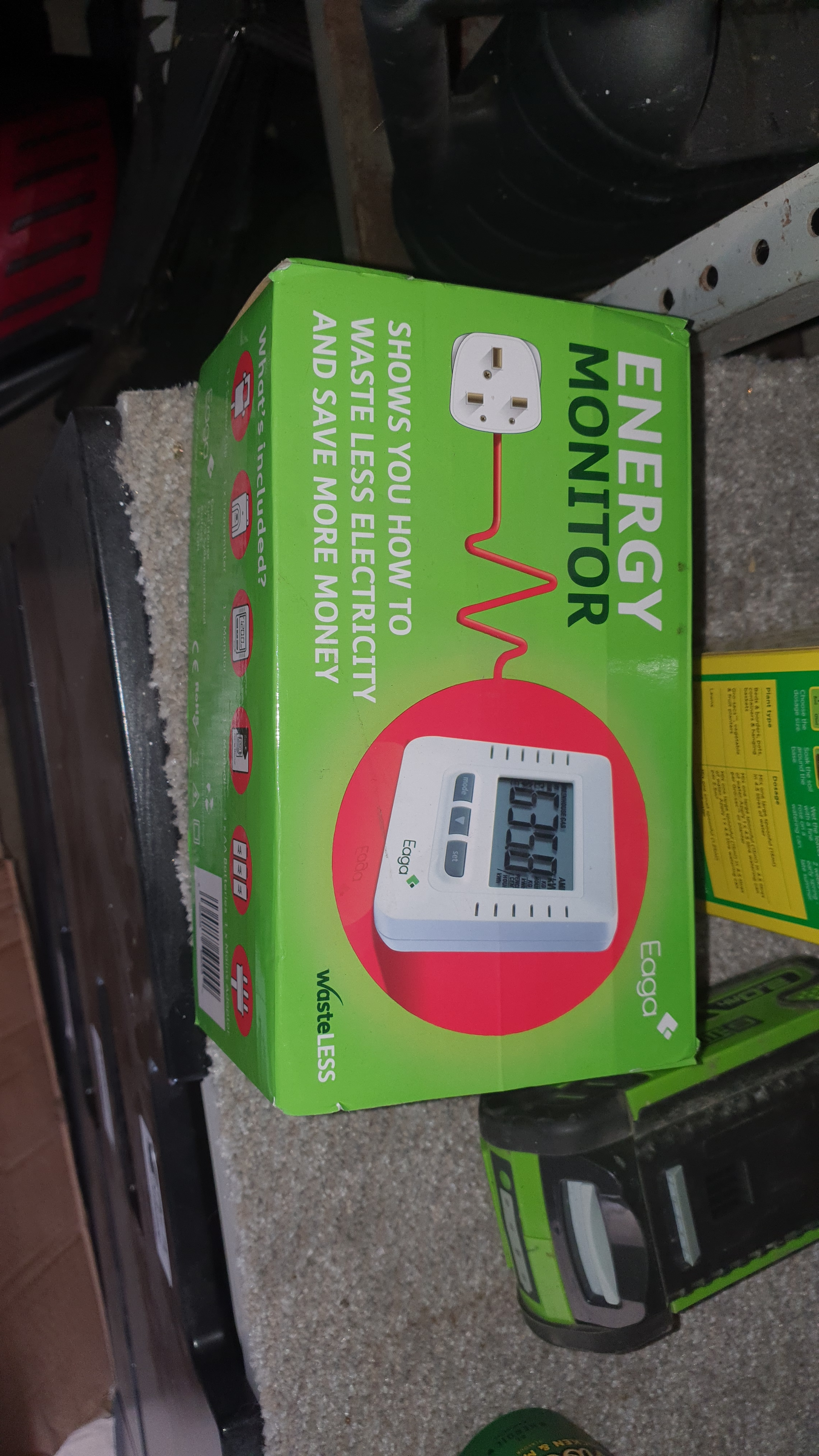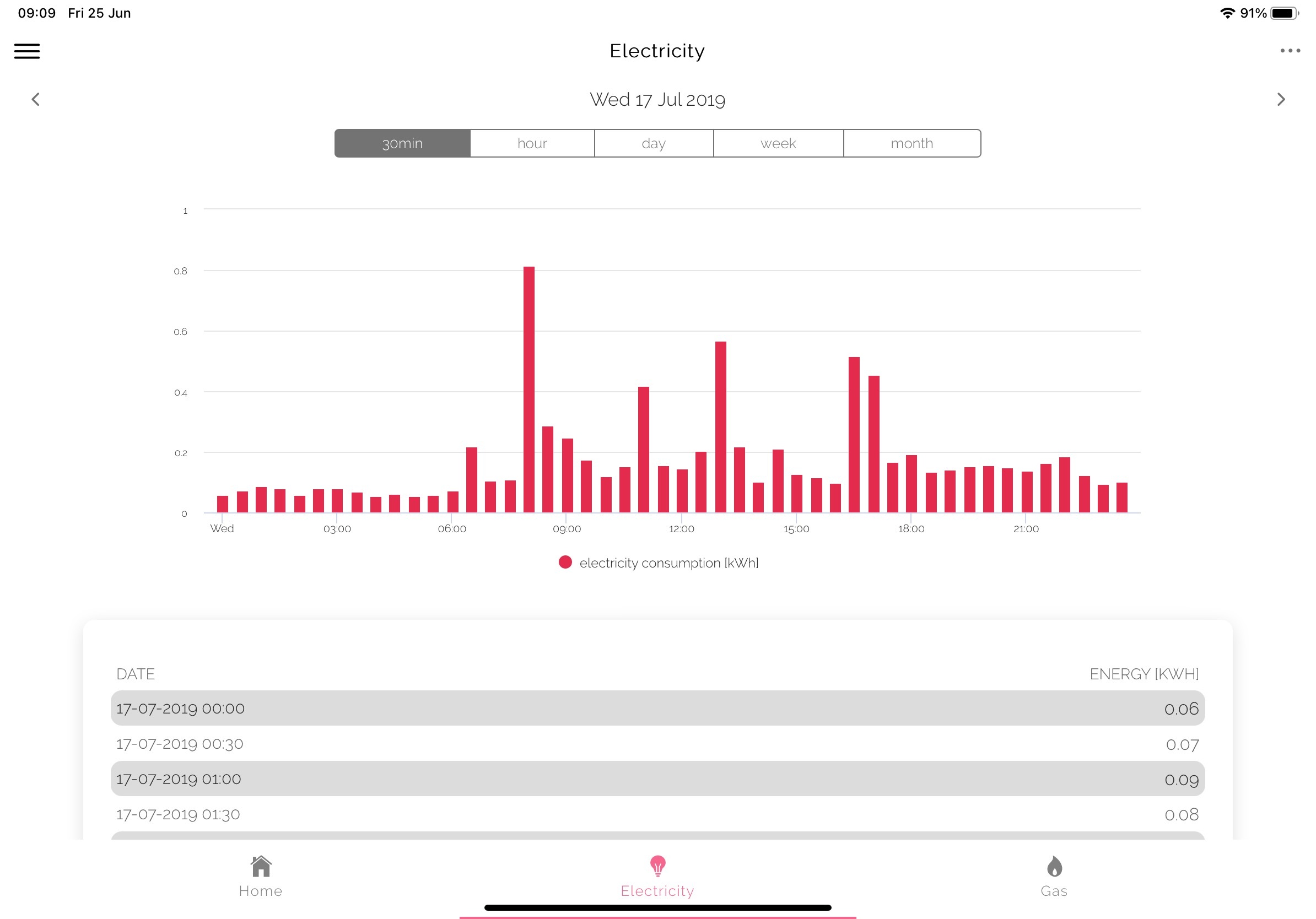We’d like to remind Forumites to please avoid political debate on the Forum.
This is to keep it a safe and useful space for MoneySaving discussions. Threads that are – or become – political in nature may be removed in line with the Forum’s rules. Thank you for your understanding.
📨 Have you signed up to the Forum's new Email Digest yet? Get a selection of trending threads sent straight to your inbox daily, weekly or monthly!
Smart meter accuracy
Comments
-
I've just created a spreadsheet, from today, I'm going to do a daily usage diary which will track:
Daily meter readings (inc time taken)
Clamp on meter montitor reading (says its accurate to 12%, but I'm not so sure!)
EV charge use
rough approximation of appliance use / cooking (if something like a Sunday lunch).
outside temperature, and NEST hours heating used.
anything else anyone can recommend!
we are having a mini break next week, so hoping I can use that to get a background usage for stuff like fridge / freezer alarm etc while away.0 -
What model of meter have you got? Someone here might have the same and be able to offer an opinion re. accuracy.darrude said:
Clamp on meter montitor reading (says its accurate to 12%, but I'm not so sure!)
N. Hampshire, he/him. Octopus Intelligent Go elec & Tracker gas / Vodafone BB / iD mobile. Ripple Kirk Hill Coop member.Ofgem cap table, Ofgem cap explainer. Economy 7 cap explainer. Gas vs E7 vs peak elec heating costs, Best kettle!
2.72kWp PV facing SSW installed Jan 2012. 11 x 247w panels, 3.6kw inverter. 34 MWh generated, long-term average 2.6 Os.0 -
darrude said:Clamp on meter monitor reading (says its accurate to 12%, but I'm not so sure!)A clamp-on meter doesn't know the mains voltage. It can only measure the current in amps, so when calculating the power in watts (W = V x A) it has to make an assumption about V, and that's what limits the accuracy.Energy monitors that count the flashes from the '1000 Imp/sec' red LED will be more accurate but they cannot be used to check a meter because if the meter has gone rogue the monitor will still believe it.1
-
Sorry for the delay, I wanted to check the box as no information on the unit itself, but no model number on that either. Its just an EAGA monitor with no model number or anything.QrizB said:
What model of meter have you got? Someone here might have the same and be able to offer an opinion re. accuracy.darrude said:
Clamp on meter montitor reading (says its accurate to 12%, but I'm not so sure!)
0 -
It should be reasonably accurate for most purposes, but the 'granularity' may mean that switching on a low wattage item appears to have no effect on consumption which can be a bit misleading.
Some clamp-on monitors measure current only down to the nearest tenth of an amp, which means that the power consumed will be shown in multiples of 24W. That can be a bit unhelpful if the actual background usage (fridge, freezer, standby) was say 150W.
It'll probably measure the current as 0.6A and display the power as 144W. Turn on a 6W LED and the true power will be 155W and the true current will be 0.646A, but that will still be measured as 0.6A and the power will still be displayed as 150W.
It's not really much of a problem, but it does mean that if you unplug a few items (e.g. a 'wall wort' with no device switched on or a phone charger with no phone plugged in) then sometimes you may not see any decrease in power, it'll be below the radar.
2 -
All that is very true and actually it can be even worse. I was given a free-be British Gas clamp-on power meter a few years ago, and the accumulated readings bore no resemblance to actual use measured on my leccy meter.Gerry1 said:It should be reasonably accurate for most purposes, but the 'granularity' may mean that switching on a low wattage item appears to have no effect on consumption which can be a bit misleading.
Some clamp-on monitors measure current only down to the nearest tenth of an amp, which means that the power consumed will be shown in multiples of 24W. That can be a bit unhelpful if the actual background usage (fridge, freezer, standby) was say 150W.
It'll probably measure the current as 0.6A and display the power as 144W. Turn on a 6W LED and the true power will be 155W and the true current will be 0.646A, but that will still be measured as 0.6A and the power will still be displayed as 150W.
It's not really much of a problem, but it does mean that if you unplug a few items (e.g. a 'wall wort' with no device switched on or a phone charger with no phone plugged in) then sometimes you may not see any decrease in power, it'll be below the radar.
It calculates average Amps from peak current measured rather than RMS. I used a ten turn loop to reduce the threshold from 20W to 2W and then tried different combinations of appliances. A 6W LED bulb read 20W, but plug an old fashioned iron cored transformer rated 50W (Door Bell) in parallel and the reading dropped to about 5W. Different combinations of stuff plugged in produced essentially random readings. Especially stuff with a switch mode power supply like the computer which draws very high but very narrow peaks of energy 100 times a second.
It could misread the fridge by up to 50% both up or down depending. I put this down to the currentTX only being "polled" about once every twenty seconds by the display, so any intermittent load is likely to give a meaningless measurements. Missing some current draw altogether, or assuming a two second power draw actually lasted up to 20 seconds.
And, as you said earlier the VA calculation will exceed the "W" displayed for anything inductive or capacitive.
1 -
I bought this in 2017 and it's pretty accurate. It's not on sale any more, but maybe there's updated model.
https://www.amazon.co.uk/gp/product/B00JIMQP6Y You can compare spec and functionality of yours and see if there's any difference in a way they measure usage.
Unless you heat your water a lot, I would say, that you use a lot of gas in summer.
0 -
You could save yourself a lot of expense and hassle if you chose a supplier that produces daily consumption charts based on 30 minute smart meter data: eg, Octopus. Data can also be accessed using BrightApp.darrude said:I've just created a spreadsheet, from today, I'm going to do a daily usage diary which will track:
Daily meter readings (inc time taken)
Clamp on meter montitor reading (says its accurate to 12%, but I'm not so sure!)
EV charge use
rough approximation of appliance use / cooking (if something like a Sunday lunch).
outside temperature, and NEST hours heating used.
anything else anyone can recommend!
we are having a mini break next week, so hoping I can use that to get a background usage for stuff like fridge / freezer alarm etc while away.
1 -
I've done my first true 24 hour (exactly) reading test.
Electric Meter: 18.6KWH
Clamp on Meter: 10.0KWH*
*1.74 amp average per hour over 24 hours:
so 1.74 * 24 * Volts =
230 volts: 9.6 KWH
240 Volts: 10 KWH
250 Volts: 10.4 KWH
0 -
I am not sure what you are hoping to prove with all this testing? No supplier is going to accept calculations from third-party metering devices. If you genuinely believe that your present meter is faulty then ask the supplier to fit a test meter. If the test meter finds in your favour then your usage will be adjusted. If the present meter is shown to be accurate, then you will be charged for the test meter.darrude said:I've done my first true 24 hour (exactly) reading test.
Electric Meter: 18.6KWH
Clamp on Meter: 10.0KWH*
*1.74 amp average per hour over 24 hours:
so 1.74 * 24 * Volts =
230 volts: 9.6 KWH
240 Volts: 10 KWH
250 Volts: 10.4 KWH3
Confirm your email address to Create Threads and Reply

Categories
- All Categories
- 352.9K Banking & Borrowing
- 253.9K Reduce Debt & Boost Income
- 454.7K Spending & Discounts
- 246K Work, Benefits & Business
- 602.1K Mortgages, Homes & Bills
- 177.8K Life & Family
- 259.9K Travel & Transport
- 1.5M Hobbies & Leisure
- 16K Discuss & Feedback
- 37.7K Read-Only Boards





